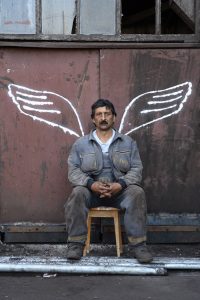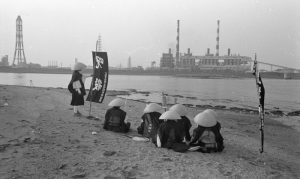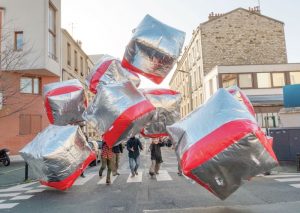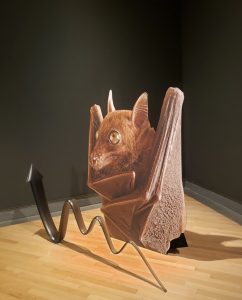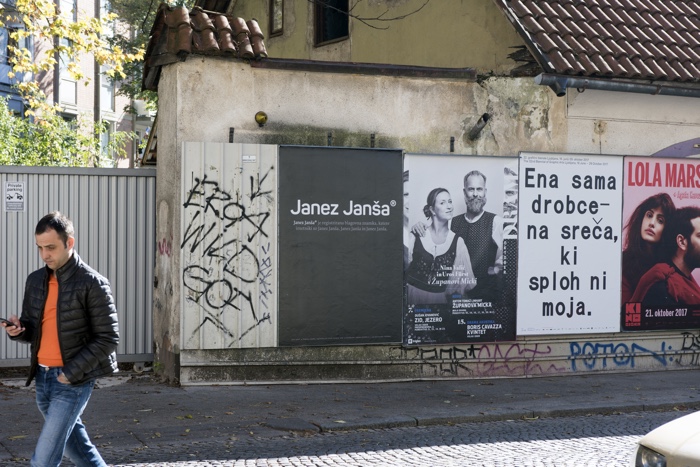
Janez Janša® at +MSUM. Photo: Dejan Habicht / Moderna galerija
In 2007, three artists officially changed their names and adopted the one of Janez Janša, a very powerful, right-wing and generally unpleasant political figure regularly embroiled in accusations of corruption and authoritarianism.
The administrative procedure not only turned their lives into a perpetual performance but it also altered their private, civil and artistic lives in ways they had not always foreseen. Ten years later, Janez Janša®, an anthological exhibition curated by Domenico Quaranta at the +MSUM – Museum of Contemporary Art Metelkova in Ljubljana explores some of the most meaningful “collateral effects” of the move.
What’s in a name? How does it relate to ownership, legal status, self-perception and self-representation, profiling, surveillance, copyright and commodification of language, and related topics that define the contemporary condition? What’s an artwork and what are the boundaries that define it in relation to life, institutions and companies?
The trio has always affirmed that the name change was only a matter of personal choice but this didn’t prevent their gesture to be interpreted and misread in many ways. Especially among political commentators who saw it as either a brazen act of political affiliation or protest. And as the soberly-titled article “Culture according to leftists: provocateurs abuse Janez Janša’s name, and political godfathers finance it all with taxpayers’ money” suggests, a full decade may have passed but the controversy surrounding the work of the three Janez Janša hasn’t abated (the other thing to note from the article is that artists receive “millions” of euros for setting up a show in Slovenia. If i were an artist i’d be looking into moving there myself.)
However, the very long-term impact of the name change indicates that its significance extends far beyond any direct reference to the Slovene politician. It not only brings about a shift of perspective on the mechanisms of power but it also demonstrates how a name can be used as an interface that unlocks a series of questions related to the conventions and ambiguities associated with identity, the limits (or lack thereof) of the fictionalization of life, the confluence of mass-consumption and customization, etc.
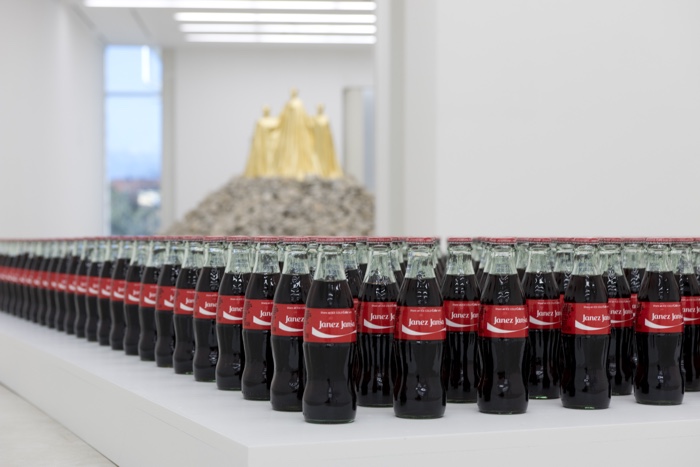
350 Janez Janša Bottles, 2017. Janez Janša® exhibition at +MSUM. Photo: Dejan Habicht / Moderna galerija
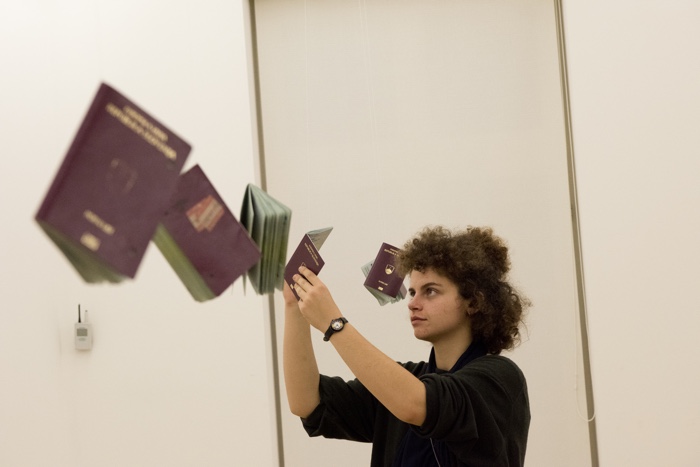
Installation view of Janez Janša® exhibition at +MSUM. Photo: Dejan Habicht / Moderna galerija
My name is Janez Jansa (trailer)
The last time i laughed so much while visiting an exhibition was… never, i think. I always knew i’d enjoy the show but i wasn’t expecting the exhibition to hit me so deeply and keep me pondering on identity, politics and the mechanisms of art institutions weeks after i’d visited the museum.
There are dozens of works in the show. Each of them explores a different status of names in the cultural, political and social spheres. I’m going to briefly introduce some of my favourite works below (you can find others in stories i’ve written in the past: My Name Is Janez Janša and Self-portraits for bank cards investigate money circulation, art ownership and identity.)
Let’s start with a bit of romance, shall we?
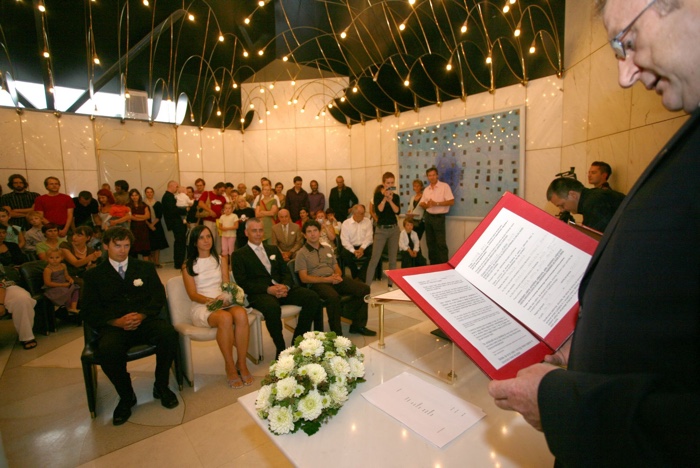
Janez Janša, Janez Janša, Janez Janša, Wedding, Ljubljana, 11 August 2007. From left: Janez Janša, best man, Marcela Okretič, bride, Janez Janša, bridegroom, Janez Janša, best man and Branko Franc Grošl, Marriage Registrar, Municipality of Ljubljana. Photo: Nada Žgank/Memento
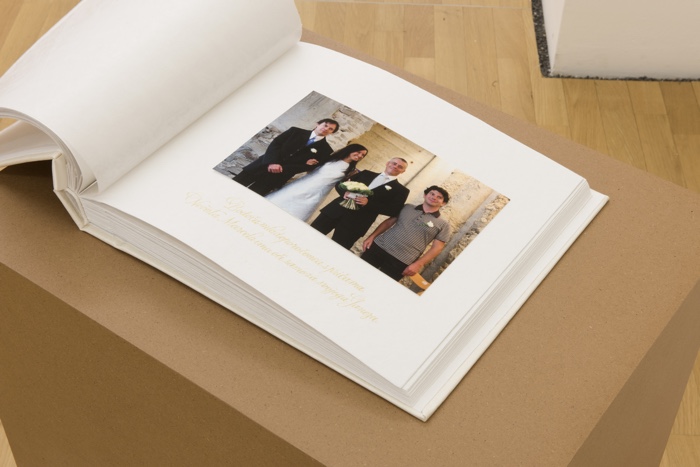
Janez Janša®, Marcela in Janez: Poroka, 2017. Installation view at +MSUM. Photo: Dejan Habicht / Moderna galerija
Janez Janša, Janez Janša, Janez Janša, Wedding, Ljubljana, 11 August 2007
On August 11, 2007, Janez Janša and Marcela Okretič got married. Janez Janša was the best man of the bride and Janez Janša the best man of the groom. The guests, unaware of the artists’ name change, learned of it during the ceremony directly from the marriage registrar at the municipality of Ljubljana.
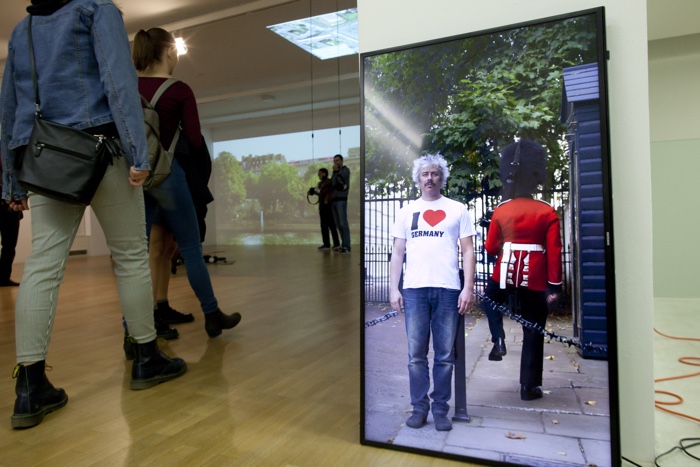
Janez Janša®, I Love Germany, at +MSUM. Photo: Miha Fras / Aksioma
Most of Janez Janša’s works make me grin then mull over. Especially I Love Germany.
“I Love” t-shirts are the most mainstream items of clothing anyone could wear… Unless it says “I Love Germany”. The word Germany is a loaded one. The county being, rightly or not, associated with European leadership, influence and prosperity.
I Love Germany, shows how even abused significants such as the “I Love” trend may take an unsuspected, powerful meaning when juxtaposed and remixed with other significants, and how a similarly abused gesture (the tourist portrait) can become a strong political gesture.
An I Love Germany t-shirt becomes a powerful medium for political commentary when worn in front the Greek parliament in Athens. Or while posing next to a Royal Guard in London for a GIF titled “Brexit”.
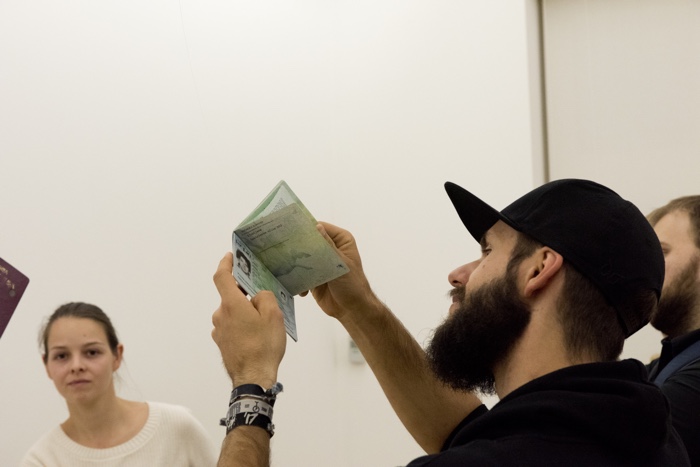
Janez Janša® at +MSUM. Photo: Dejan Habicht / Moderna galerija
An important aspect of the work investigates the documents that emanate from identity: signatures, passports, ID cards, credit and debit cards, etc. The 2008 Name Readymade exhibition showcased the artists identity cards, passports, bank cards and other documents that bear their names. These artifacts operate both as valid legal documents and works of art, rising the question of what comes first in terms of value and significance: the cultural object or the administrative document? These objects belong to the state, not the artists. On the one hand, they are passports which can’t be sold on the art market as long as they are valid legal documents. And once they have expired, the same documents must be destroyed or returned.
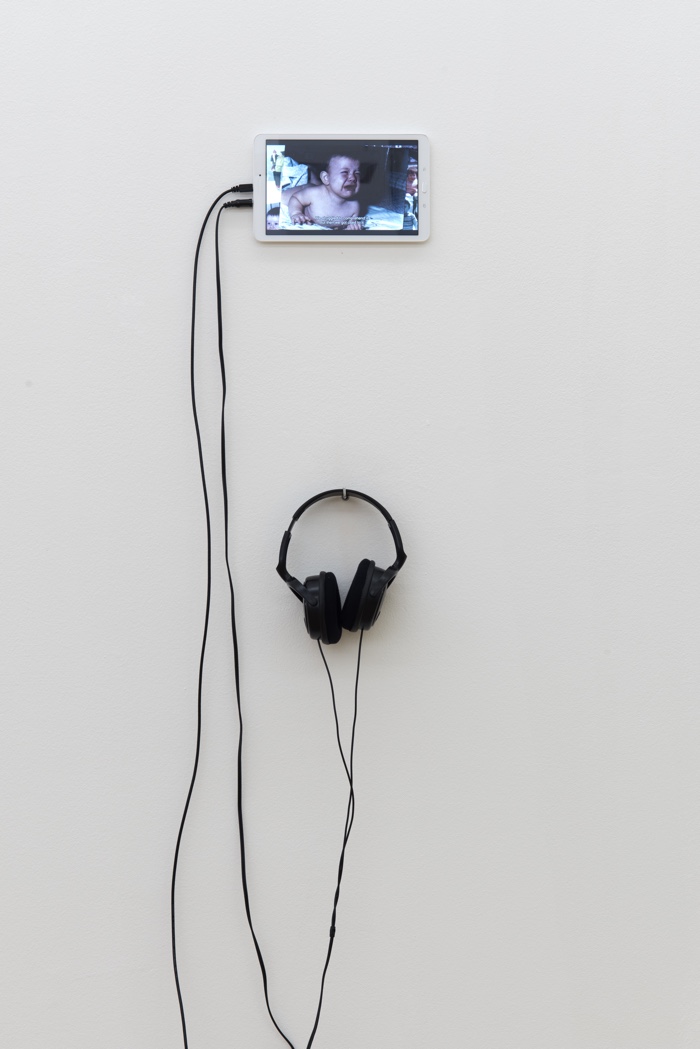
Janez Janša® at +MSUM. Photo: Dejan Habicht / Moderna galerija
The perceptual power of a name runs far deeper than i had expected (although given the name of my blog i should have seen it coming!) A name is such a vital part of the way you are perceived that it can determine the success of your job application or whether potential dates will swipe left or right on Tinder. I recently read that white people named Washington complained about the discrimination they face on the phone because other U.S. citizens immediately assume they are black (sorry i can’t find the link to the article anymore!)
One of the videos in the show explore the emotions that the artists’ parents went through upon hearing that their son had changed their names. One dad seemed to wave it away as yet another shenanigan from his mischievous arty child. Another understood it as a public gesture of rejection. That’s when i realized the toll that a simple administrative procedure like this can take on friends and families. Maybe that’s why the parents selected the most embarrassing photos of their kids to illustrate the video?
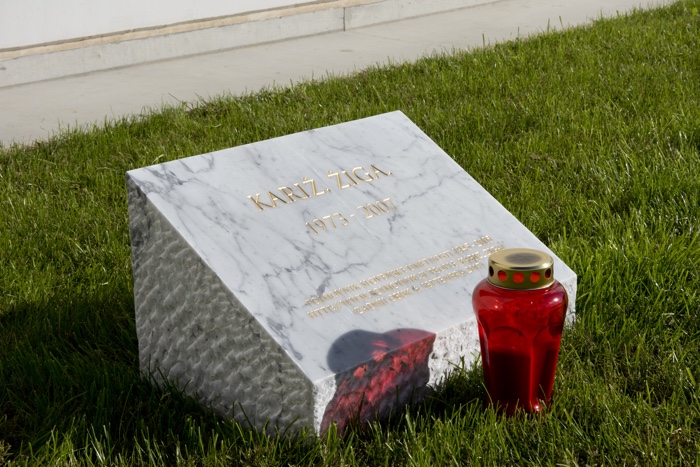
Life Span, 2017. Janez Janša® at +MSUM. Photo: Dejan Habicht / Moderna galerija
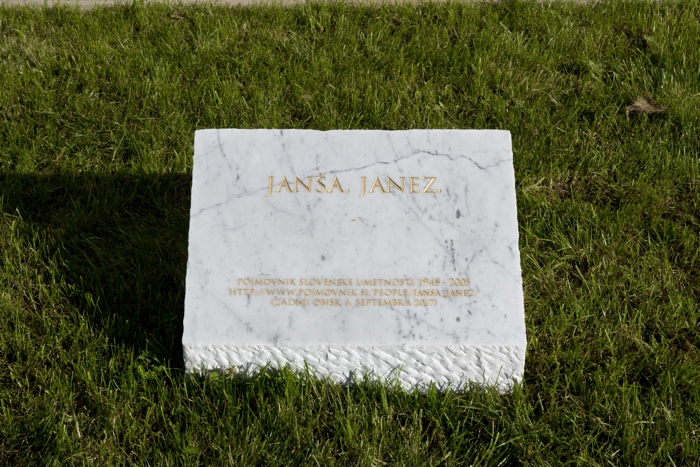
Life Span, 2017. Janez Janša® at +MSUM. Photo: Dejan Habicht / Moderna galerija
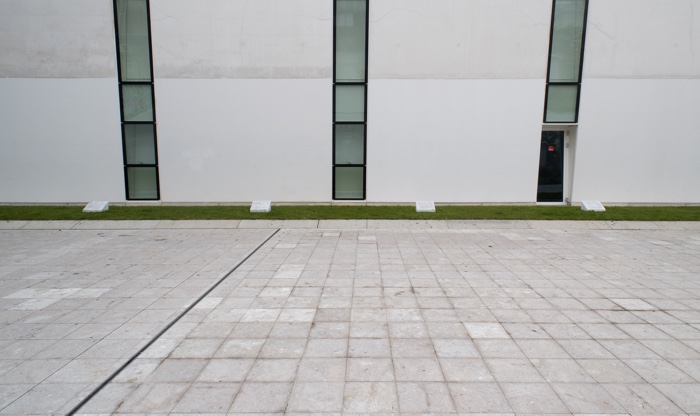
Life Span, 2017. Janez Janša® at +MSUM. Photo: Dejan Habicht / Moderna galerija
A troublesome byproduct of Janez Janša, Janez Janša and Janez Janša’s name changes is how they will be remembered. Which name will be inscribed on their tombstones? Does their artistic career start when they graduated from art school or when they adopted the new name? Are Emil Hrvatin, Davide Grassi, Žiga Kariž legally and artistically dead?
Three tombstones, placed on the lawn in front of the museum, look at how online database of Slovene art Pojmovnik slovenske umetnosti has processed their existence. When referring to their original name, the website indicates that each of the artists died in 2007. But there is only one entry for Janez Janša and it is devoid of date of birth or death, making them ageless and eternal.
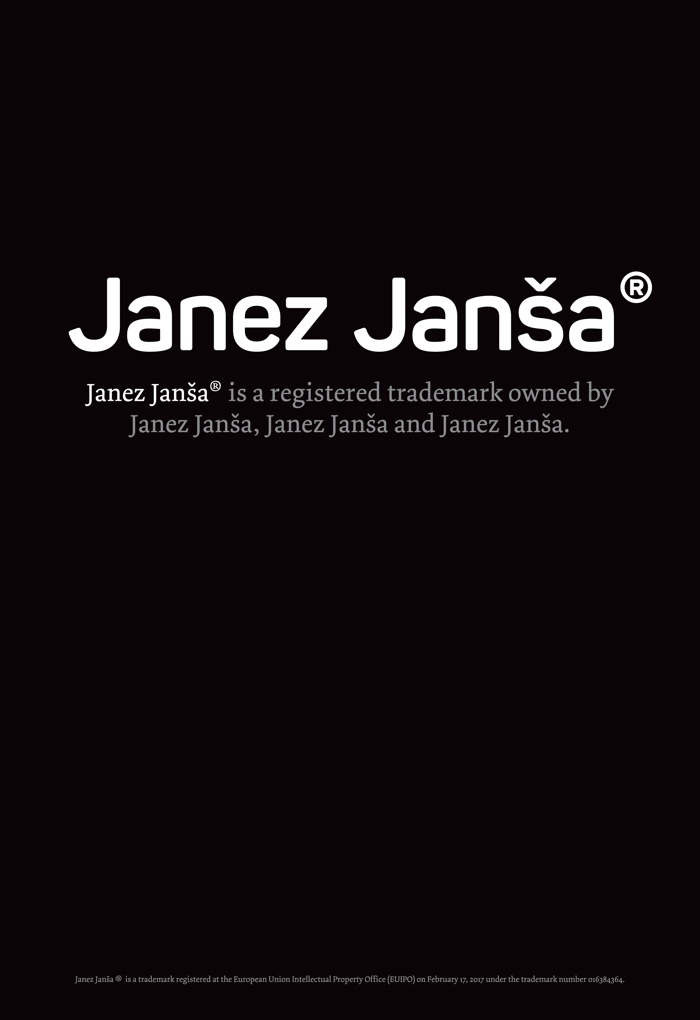
Janez Janša®, 2017. Graphic designer: Luka Umek
The exhibition premieres the latest episode in the Janez Janša, Janez Janša, Janez Janša adventures: the registration of the Janez Janša name as a trademark for the next ten years. With this trademark, the artists “promote the commodification of their own names and their value by colonizing the area of trade, and name it as a property that you can legally protect.”
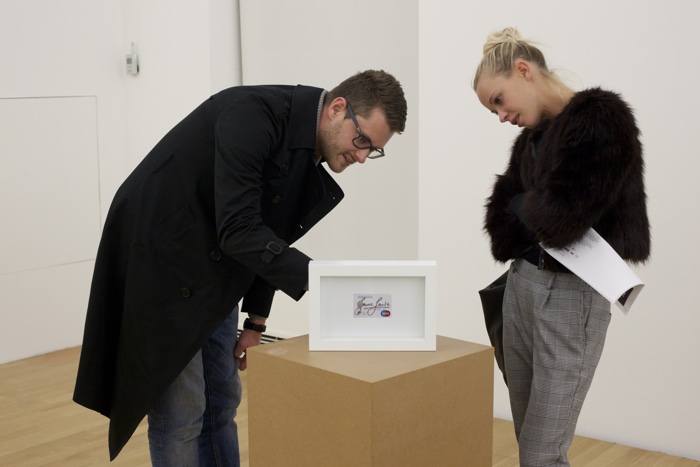
Janez Janša® at +MSUM. Photo: Miha Fras / Aksioma
All of the above is tinged with a certain irony when you learn that the legal name of Janez Janša (the politician) is actually Ivan Janša. Apparently, Janez is seen as ‘more’ Slovenian than Ivan in the country. As one of the 3 Janez Janša artists explained in an interview with Marc James Léger: In his case, he appears with different names in two institutional situations. In political life he always appears with the name Janez Janša, but in legal affairs, and he goes very often to the courts, for various reasons, now because of corruption charges, and appears with his legal name, Ivan Janša.
More images from the show:
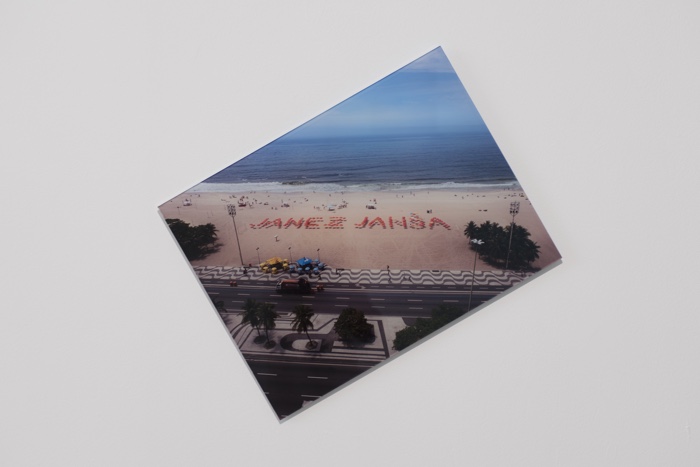
Janez Janša® at +MSUM. Photo: Dejan Habicht / Moderna galerija
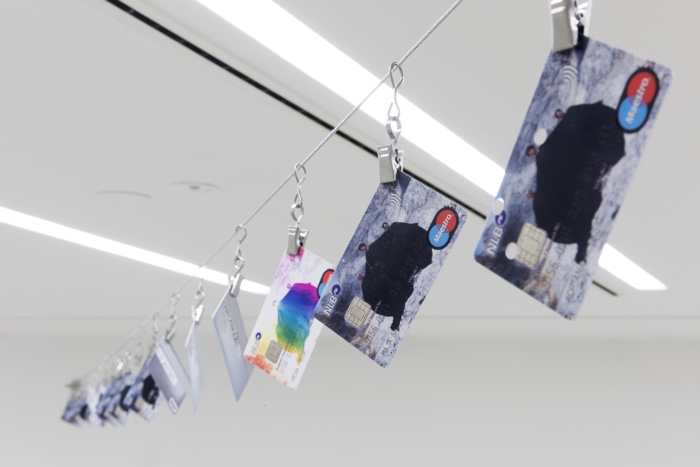
Janez Janša® at +MSUM. Photo: Dejan Habicht / Moderna galerija
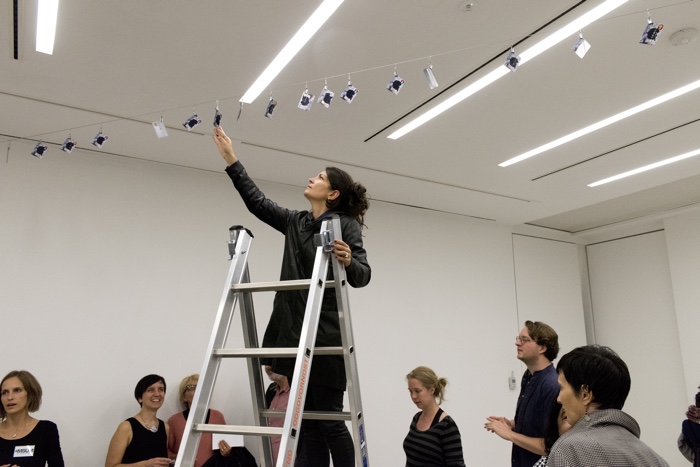
Janez Janša® at +MSUM. Photo: Dejan Habicht / Moderna galerija
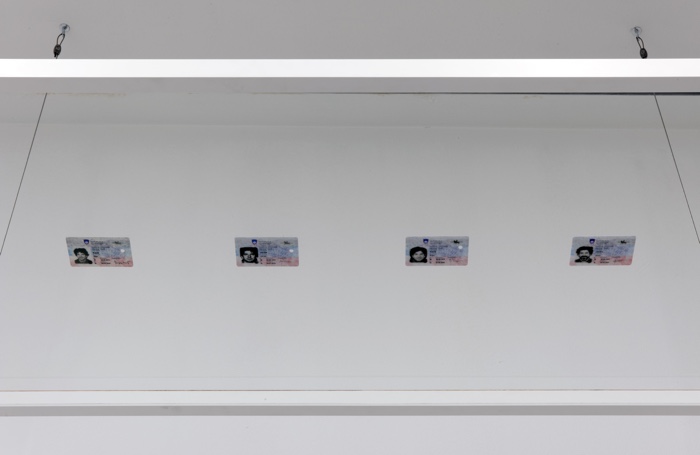
Janez Janša® at +MSUM. Photo: Dejan Habicht / Moderna galerija
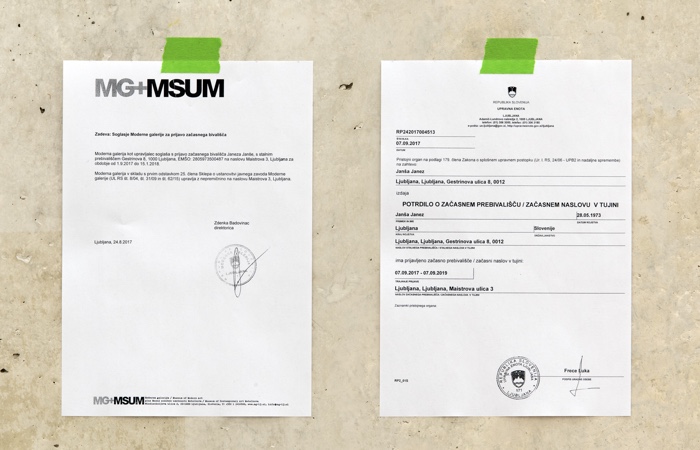
Janez Janša® at +MSUM. Photo: Dejan Habicht / Moderna galerija
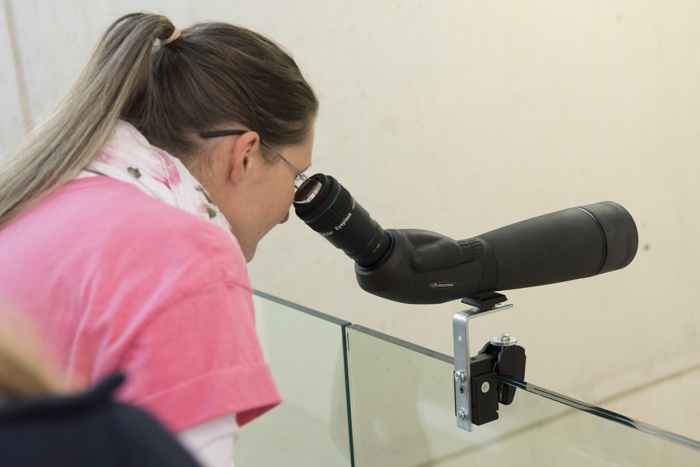
Janez Janša® at +MSUM. Photo: Dejan Habicht / Moderna galerija
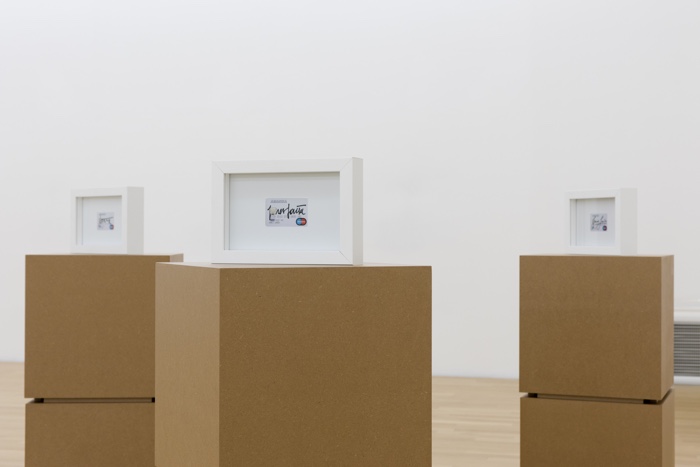
Janez Janša® at +MSUM. Photo: Dejan Habicht / Moderna galerija
Janez Janša® was co-produced by Moderna galerija (MG+MSUM) and Aksioma – Institute for Contemporary Art and curated by art critic and independent curator Domenico Quaranta. The exhibition is at +MSUM – Museum of Contemporary Art Metelkova in Ljubljana until 18 February 2018.
Janez Janša® is part of State Machines – Art, Work, and Identity in an Age of Planetary-Scale Computation, a project that investigates the new relationships between states, citizens and the stateless made possible by emerging technologies, focussing on how such technologies impact identity and citizenship, digital labour and finance.
Previously: My Name Is Janez Janša and Self-portraits for bank cards investigate money circulation, art ownership and identity.

